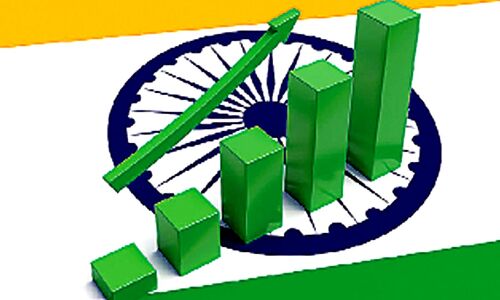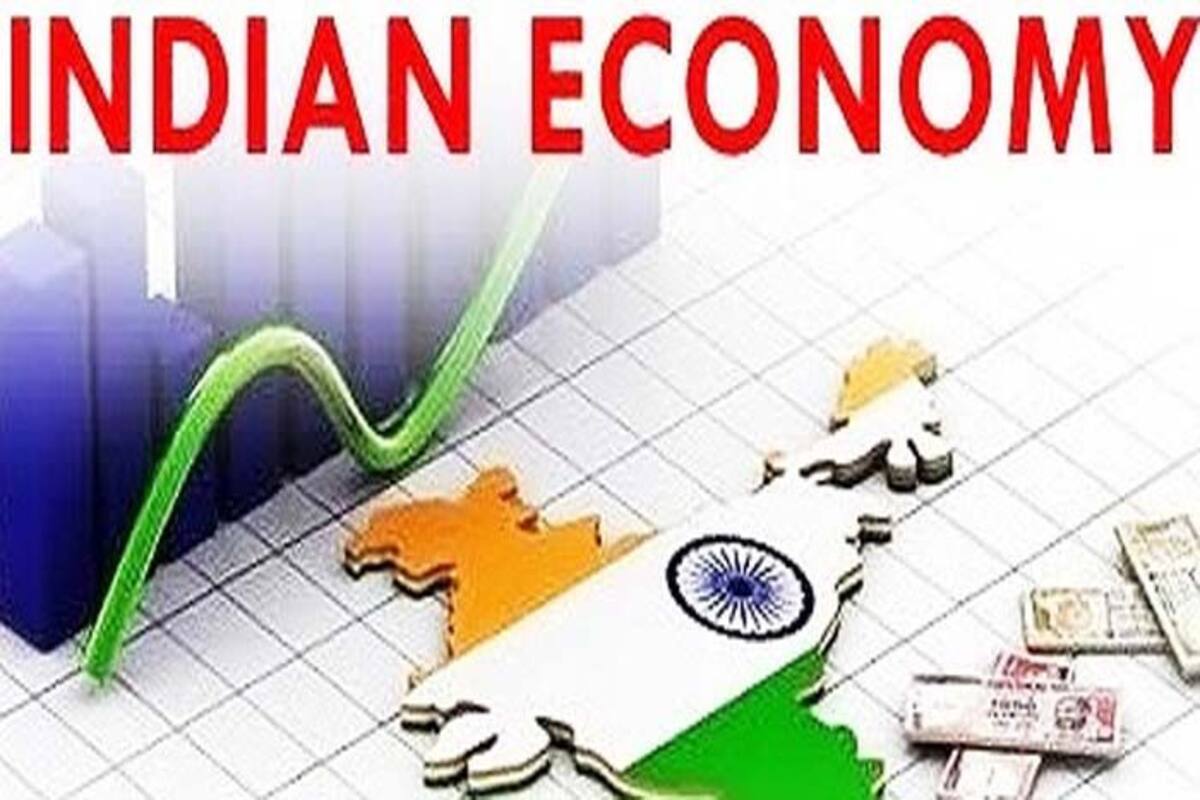A Snake Charmer Charming the Indian Economy – Spain’s National Daily Sparks Outrage; Indian Economy in 2022, not 1922!

A Snake Charmer Charming the Indian Economy – Spain’s National Daily Sparks Outrage; Indian Economy in 2022, not 1922!
Talking about perceptions in a day and age when information is readily available, a Spanish newspaper has created an uproar in India Inc and citizens alike with its depiction of a snake charmer to denote India’s economy.
La Vanguardia perhaps has its reporters living under a stone who still think that India is the land of snake charmers and that people travel in horse carts or on elephants.
The article “The hour of the Indian Economy” used the illustration of a snake charmer playing his instrument to make the graph of Indian economic growth go up. The report went viral as many took to Twitter, and thus ensued a debate regarding the ‘objectionable’ illustration.

Which World is Spain Living In?
While there is much debate on the illustration depicting the upward trend in the Indian economy, it is surprising to note that there is still a “colonial hangover” that the Spanish newspaper thinks India to be under. Perhaps the tourists from Spain have reported back home that India runs on “horsepower” and we use “firewood” to cook our daily meals.
While this may be the case in remote villages and for a few households, probably because of specific reasons but by large, indeed not the case for the majority.
Spain V/s India
The economic growth trajectory of Spain and India is at its most comprehensive – let us compare some facts and figures.
In terms of GDP – Spain is currently the 15th largest economy in the world, with a GDP of around $2 trillion. In contrast, the Indian economic GDP is approximately $3.5 trillion, and India is the 5th largest economy in the world.
Gross Domestic Product & Income
|
Stat |
India |
Spain |
|
GDP |
$2.7T |
$1.4T |
|
GDP growth, 1 year |
7.1% |
2.5% |
|
GDP growth, 5-years average |
7.6% |
2.7% |
|
Population |
1.3B |
46.7M |
|
GDP per capita |
$2k |
$30k |
|
GDP per capita growth |
5.71% |
2.07% |
|
Purchasing Power Parity conversion factor |
18.1 |
0.65 |
|
Price level ratio of PPP conversion factor GDP to market exchange rate |
0.26 |
0.76 |
|
GDP per capita, PPP adjusted |
$7.9k |
$40k |
|
GNI, Atlas method |
$2.7T |
$1.4T |
|
GNI per capita |
$2k |
$29k |
|
GNI, PPP adjusted |
$10.4T |
$1.9T |
|
GNI per capita, PPP adjusted |
$7.7k |
$40k |
The above table clearly shows the statistics between India and Spain
For the World Economic Outlook, as per the latest International Monetary Fund, IMF report India will overtake Germany‘s economy in 2025- 26 to go on to become the world’s 4th largest economy, and by 2027-28, India will achieve the $5 trillion mark to overtaking Japan to become the 3rd largest.
While the entire world’s economic growth has slowed considerably compared to the rest of the world, IMF has projected India’s growth forecast for 2022 – at 6.8% compared to countries in Europe like Germany and Italy that are looking towards recession.
Financial system and Human Development

Financial system and Human Development
|
Stat |
India |
Spain |
|
Income Tax Rate |
30.9% |
45% |
|
Corporate Tax Rate |
32.4% |
25% |
|
Inflation, consumer prices |
3.5% |
1.7% |
|
Inflation, GDP deflator |
4.1% |
1.1% |
|
Unemployment |
2.6% |
15.5% |
|
Economic Freedom Index |
56.5 |
66.9 |
|
Personal Freedom Index |
6.96 |
8.95 |
|
Human Freedom Index |
6.8 |
8.22 |
|
Property Rights Index |
63 |
74.9 |
|
Judical Effectiveness Index |
64.1 |
51.8 |
|
Business Freedom Index |
65.6 |
66.8 |
|
Fiscal Health Index |
13.1 |
62.6 |
|
Labor Freedom Index |
41.2 |
57.7 |
|
Investment Freedom Index |
40 |
85 |
|
Financial Freedom Index |
40 |
70 |
|
Trade Freedom Index |
73.4 |
86.4 |
|
Monetary Freedom Index |
73 |
82 |
|
Government Spending Index |
77.9 |
48.3 |
|
Tax Burden Index |
79.4 |
62.1 |
|
Government Integrity Index |
47.2 |
55.1 |
|
Corruption Perceptions Index |
41 |
58 |
|
Life expectancy at birth, years |
69.2 |
83.3 |
|
Suicide mortality rate, per 100,000 people |
16.3 |
8.7 |
|
Mortality caused by road traffic injury, per 100,000 people |
22.6 |
4.1 |
|
Intentional homicides, per 100,000 people |
3.2 |
0.7 |
|
International tourism, number of arrivals |
17.4M |
82.8M |
In terms of the Financial System and Human Development – the Income Tax rate in India is much lower. While we are struggling with inflation, our unemployment rates score much better as compared to that of Spain.
Government debt & reserves
|
Stat |
India |
Spain |
|
Central government debt, % of GDP |
69.8% |
97% |
|
External debt stocks, % of GNI |
19.3% |
N/A |
|
External debt stocks |
$521.4B |
N/A |
|
Short-term debt, % of total reserves |
26.1% |
N/A |
|
Total debt service, % of exports and primary income |
11.4% |
N/A |
|
Adjusted net savings including particulate emission damage, % of GNI |
16.3% |
9.1% |
|
Gross savings, % of GDP |
30.9% |
22.3% |
|
Gross capital formation, % of GDP |
31.3% |
20.4% |
|
Total reserves including gold |
$399.2B |
$70.6B |
|
Foreign direct investment net inflows |
$42.1B |
$49.1B |
When it comes to Debt and Reserves, again, our debt in % is much lower as compared to Spain. India also has a higher Gross saving (GDP) than Spain, and our total reserves are substantially higher than that of Spains.

Exports, imports and economic structure
|
Stat |
India |
Spain |
|
Exports of goods and services, % of GDP |
19.7% |
35.1% |
|
Imports of goods and services, % of GDP |
23.6% |
32.4% |
|
Current account balance (balance of payments) |
-$65.6B |
$27.3B |
|
Revenue excluding grants, % of GDP |
12.9% |
15.7% |
|
Grants excluding technical cooperation, BoP |
$689.4M |
N/A |
|
Personal remittances received |
$78.8B |
$3.4B |
|
Industry including construction value added, % of GDP |
26.7% |
20% |
|
Agriculture, forestry and fishing value added, % of GDP |
14.6% |
2.8% |
|
Charges for the use of intellectual property, payments BoP |
$7.9B |
$6.6B |
|
Charges for the use of intellectual property, receipts BoP |
$784.9M |
$2.5B |
|
Expense, % of GDP |
14.9% |
18.8% |
|
Government Expenditure, % of GDP |
27.1% |
41.5% |
India’s economic growth is well diversified across all segments in all industries. Our dependence on the global economy for imports of essentials except Oil is much lesser. Hence, because of the same, any effects of a worldwide economic slowdown have a lesser impact on the Indian economy.

India has its own trajectory; we are a country that is so unique and governed by so many parameters that are not applicable to other countries in the world.
In terms of the sheer size (land mass) and our population (which is a point of concern) is mainly in the category of young people that are contributors to the growth of the economy. Whereas in other European countries, there is a growing concern about its populace which is on a decline and primarily from the aged category; hence contribution towards growth is also a looming concern.
The Indian startup ecosystem is robust, and while funding has become a concern, we innovate, evolve and adapt to stay on top of any market situation applicable at a given point in time.
Conclusion: the Spanish daily perhaps should have done its homework on what is the right and correct depiction of India’s economic growth. India is not a country that is living in the dark ages, while the rest of the world seems to have progressed to Mars.
Cultural education and the realities of today’s world ecosystem are a must for any media house which is responsible for giving out facts and information. It should not be tainted by prejudices, preconceived notions or insulting towards any community, country or people in general.
The Twitter backlash can be taken as a point of learning and moving forward with a more realistic and correct depiction so as not to stork a controversy in the future.
edited and proofread by nikita sharma




